Pro-tier athlete management for all - The new RepOne Athlete app
Re-thinking connected fitness
From day one, we've been driven by a simple belief that the world would be a better place if everybody were to exercise. Preferably by lifting weights, ideally heavy ones. In his book "Outlive", Peter Attia suggests strength training "may even trump cardiorespiratory fitness" as the single most significant contributor to healthspan, the duration of your life without chronic or debilitating disease. Unfortunately, almost 80% of Americans don't exercise regularly. At RepOne, we spend most of our day-to-day thinking about improving performance for athletes on the bleeding edge of fitness, but we believe eventually the bleeding edge always finds its way to the mainstream.
Today we're announcing the new RepOne: a growing ecosystem of RepOne Connected exercise equipment built by your favorite equipment manufacturers, connected to training software used by the best coaches in the world. We're also excited to announce the pre-order for the brand new RepOne Connected Kratos Flywheel, the first new piece of exercise equipment compatible with all of our apps. This partnership was built in close coordination with Kratos as we re-engineered all of our systems to be modular and extensible, enabling easy integration with their equipment. They've been an incredible first partner, OTA-uploading many versions of firmware while we built all of the new metrics, testing new plug-and-play peripherals, and giving feedback on new software UI.
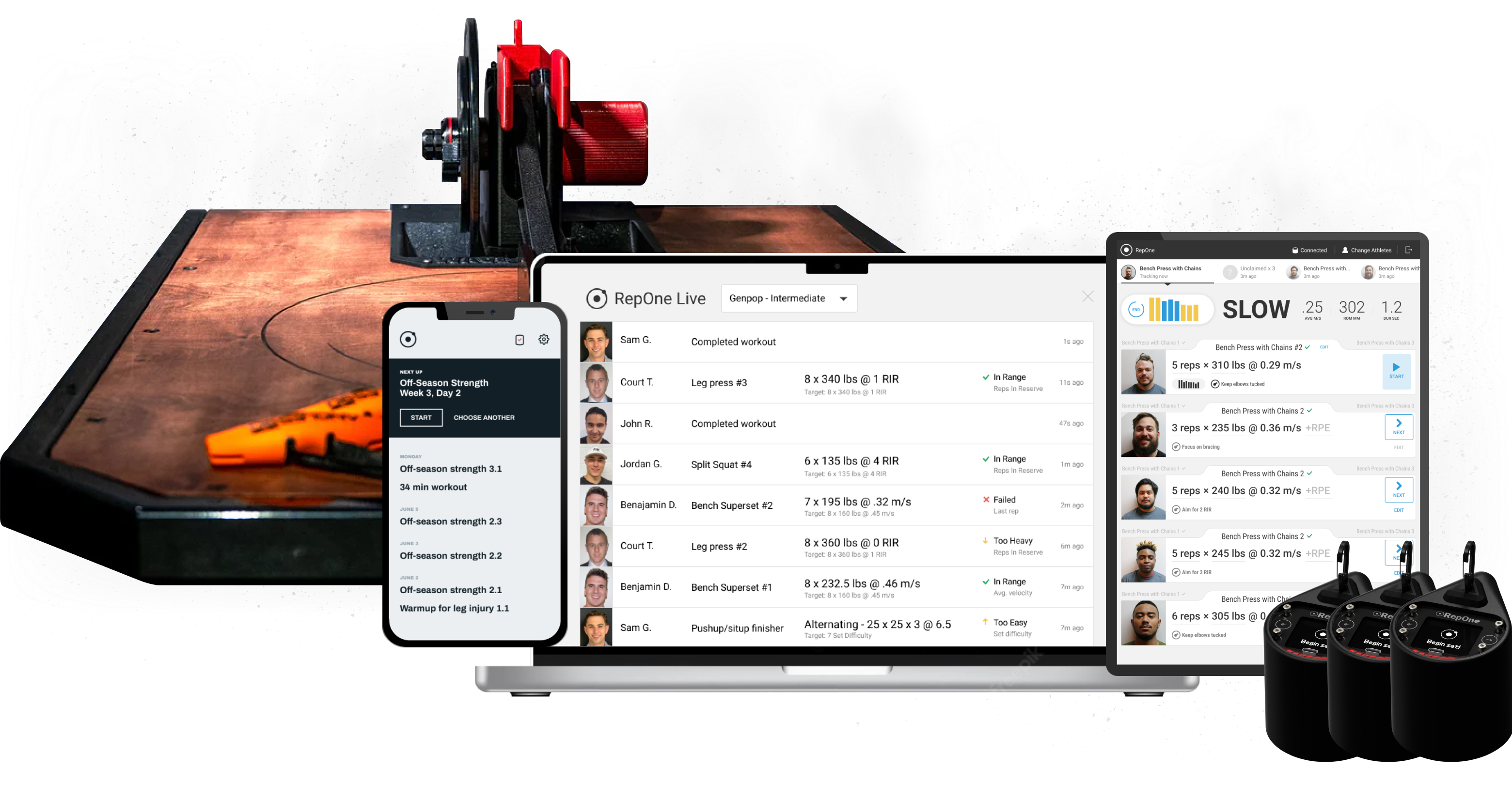
The new RepOne has been in the works since before the first OpenBarbell was shipped back in 2015, nearly four years before we incorporated. It was by no means a direct path, and the concept we had back then barely resembled the contents of today's launch. Surprisingly the key insights remained remarkably unchanged over eight years, bolstered by things our customers taught us along the way.
I'll break down the problem we see in connected fitness, how we plan to solve it, some vital go-to-market details, and our vision for the future. But first, a brief bit of history.
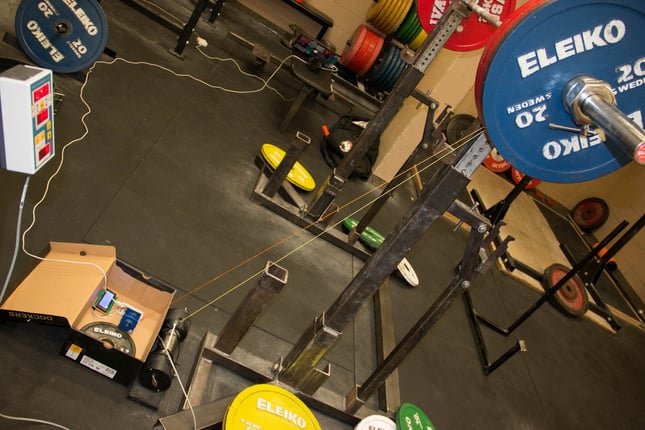
In the mid-2010's I was working a desk job in aerospace, designing control systems for jet engines that would power the F35 and commercial aircraft from Boeing, Mitsubishi, Airbus, etc. In the evenings I would focus all of my repressed engineering creativity into an open source project that helped my friends and I track the speed of our barbell lifts, so we could improve our performance in powerlifting competition.
At that time, I didn't perceive the project to be anything more than a hobby. Not because of a lack of interest, though. We had inbound from incredible coaches who wanted to outfit all of their remote personal training clients with a device, or each rack in their NFL weight room. The issue, I suspected, was the market of data-junky athletes and coaches wasn't large enough to fuel the R&D needed to innovate. It wasn't until a conversation I had with a friend who is now our Science Advisor, Dr. Mike Zourdos, that my mind started to change.
We were imagining a future where the literature on Velocity Based Training (VBT) had advanced to the point where it were fully automate-able. The data could be abstracted away, and the user would be left with nothing but guidance for each important training variable. Theoretically, this style of automated feedback could be applied to many athletes at once, allowing coaches to scale highly individualized training without a data science background and pro-level budget. Pretty quickly we realized that this style of automation wasn't unique to VBT, but could be applied without any special hardware via a version of the Borg RPE scale adapted for barbell training (pioneered by Mike Tuscherer of RTS, and first published in scientific literature by Dr. Mike Zourdos himself).
I thought back to the conversations I had with remote trainers and S&C coaches and realized they weren't simply trying to do VBT at scale, they were buying tools to enable individualization at scale, and we had the opportunity to make that accessible to all.
It wasn't until a couple years later, after about 1000 OpenBarbell units sold, that I realized another key insight. We had been approached by several Athlete Management System (AMS) companies looking to integrate with our product as it was being used by an increasing number of their customers. We were evaluating the capability of these integrations against what we had learned about our customers, and it just wasn't a fit.
Third party integrations, the type where your data is uploaded asynchronously (after your workout) with a training app, were never going to be sufficient to enable a simple relationship between the user and their data. One device's data may require a bar chart, another a 3D visualization, a third may need different metrics prescribed in the program builder, or a different report type in the dashboard. Once the data was acquired it needed to be cleaned, analyzed, and processed by algorithms that could turn it into instruction. The biggest blocker yet was that these various UI elements and set-by-set instruction couldn't just be shoehorned into existing apps, the interactions were too complex. Years later our Head of Design Logan would say "In my 15 years of experience, this is by far the most complex app I've ever designed."
Athlete Management System companies were already spread thin building hundreds of features just to out-compete spreadsheets, they didn't have the bandwidth to rebuild their entire tech stack from the ground up to enable the kind of realtime interaction and guidance our customers were looking for.
The last part of the puzzle came together in 2021. At the height of Peloton's value toward the end of 2020, they traded at over 10x revenue, which is typical for silicon valley tech monoliths. This access to capital helped them build a giant growth engine similar to other 'unicorns', so they could do things like hire teams of engineers to improve their tech, vertically integrate, and seize market share. Pandemic whiplash caused the price of Peloton stock to skyrocket, and subsequently plummet when behavior changed alongside supply chain constraints.
At the same time, we were having meetings with equipment companies whose customers were tracking metrics with RepOne Sensor. We were interested in co-marketing agreements as our products together provided more value than they did separately. When we looked around, we thought there may be something more to that idea.
Peloton now trades at around 1.5x revenue, comparable to other exercise equipment companies like Technogym. Their marginal revenue and growth opportunity make them more like an exercise equipment company than a tech company, and in 2022 their balance sheet showed something similar. Huge warehouses full of depreciating inventory of their expensive, custom made bikes.
The current performance of Peloton's stock, along with many other connected fitness companies, is indicative of the market's belief that they're no longer able to innovate like those in Silicon Valley. They shed over 4500 employees of their original 6700-strong growth machine.
As technology advances, it rarely becomes less integrated in the products we most often use. We know people love the experience of training with connected equipment, and we know the data we produce while exercising can be incredibly impactful. If the walled-garden Apple-esque approach of vertically integrated tech and hardware can't get your training equipment connected, what kind of company can?
Psychologist Gay Hendricks coined the term "zone of genius", describing the philosophy of focusing on your innate talents, and de-emphasizing skills you're less efficient and effective at employing. As of last Summer, Peloton announced they'll be outsourcing all manufacturing to a company in Taiwan who had been specializing in manufacturing for decades. Companies like Ergatta, who began by outsourcing manufacturing to WaterRower, fared best during the post-pandemic storm.
We always knew the tech we've been building was useful beyond VBT. By the time Kratos approached us to co-market our products, the idea of a deeper integration seemed obvious. We focus on great technology, and they focus on great equipment.
Connected fitness products in the performance space, and more broadly as you look around at consumer tech, leave something to be desired. As the iPhone operating system approaches its 18th generation, our relationship with technology has advanced rapidly over a very short time. We expect glossy modern user interfaces, seamless integrations, info saved in the cloud, and much more. What we experience on the performance side of fitness is quite a bit different.
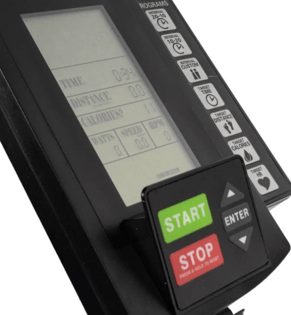
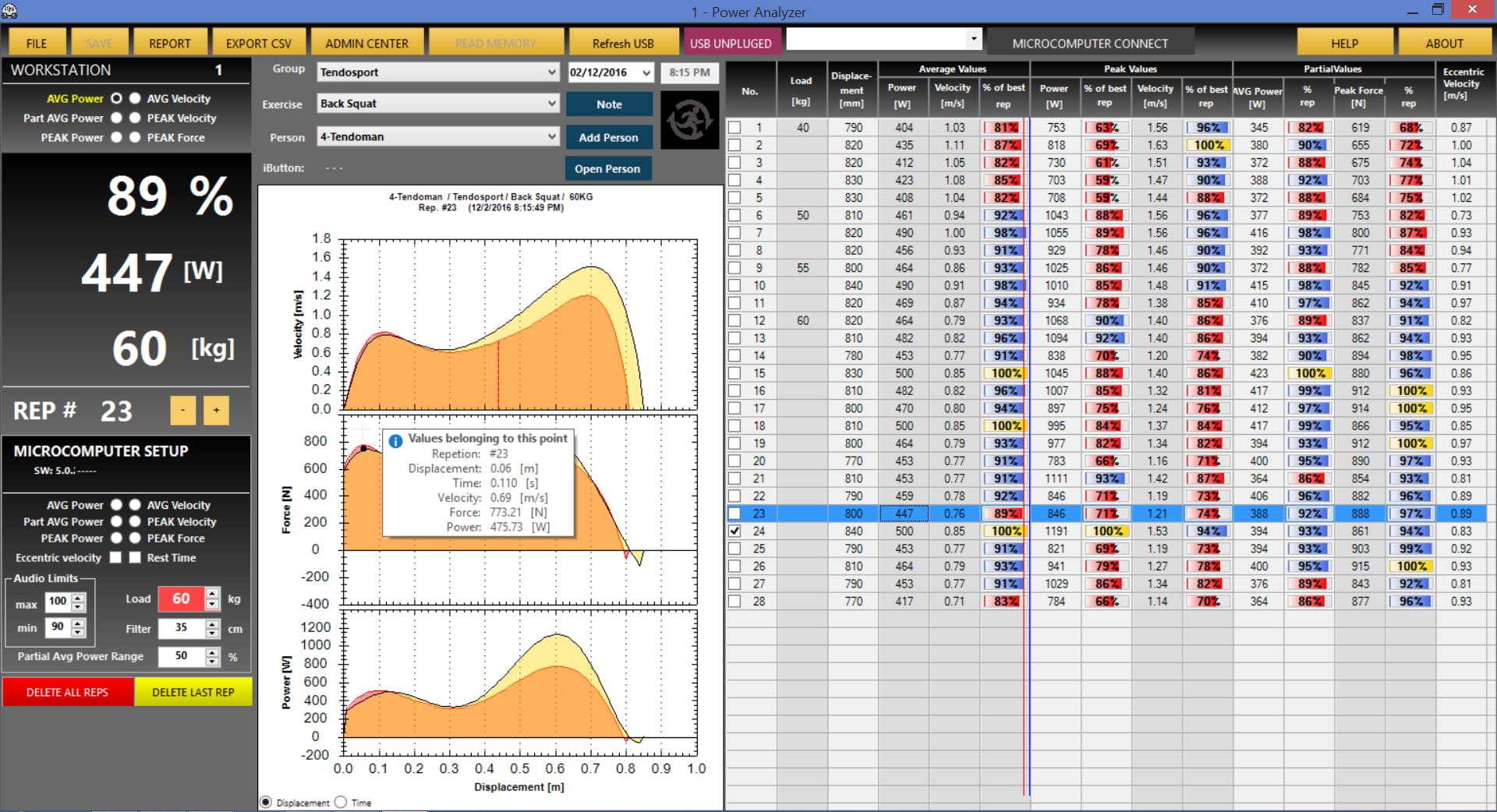
It's worth pointing out that this is for good reasons, as I outlined in detail above. Technology companies and exercise equipment companies are incredibly different. The competencies required to build modern software are risky to acquire when almost all of your revenue is derived elsewhere.
Harvard professor Clayton Christensen wrote a fantastic book about this titled "The Innovators Dilemma", where he outlines many examples of industries disrupted by technology while existing companies, with plenty of resources to compete, are found flat footed. The book is over 300 pages and Christensen is a much better writer than I, but in short, it can feel quite irrational to stare good cash flow in the face and say "let's focus on something else".
The Innovators Dilemma is true for small companies like RepOne and Kratos, and giant companies like Apple and Ford. Compare Apple CarPlay...
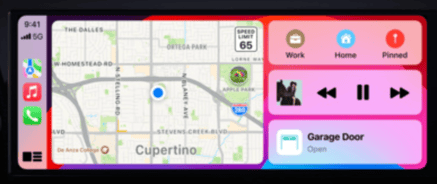
To MyFord Touch.
.jpg?width=325&height=183&name=image%20(1).jpg)
Apple's iCloud and iTunes Chief, Eddy Cue, headed development of what would be Apple CarPlay, bringing in engineers from both of those departments. Not only was staffing the project more straightforward at Apple, the economics were far easier to justify. CarPlay revenue potential was much higher, as it could be sold to every car manufacturer on earth. That means a better funded, and better developed piece of software. Additionally, adding vehicle compatibility to the iPhone gave it another competitive battle ground with Android phones. Ford only had their own cars to ship software on, and if they didn't get on board with Apple, they'd have to compete against them.
All RepOne Connected equipment will integrate with our training platform, including our AMS RepOne Coach, our rack-mounted weightroom management software RepOne Station, and our upcoming mobile app RepOne Athlete. Each app also works really well with no connected equipment at all. In fact since account creation will be free, we think many more people will use this platform for their untracked training, and will benefit from adding RepOne Connected products at some point in the future.
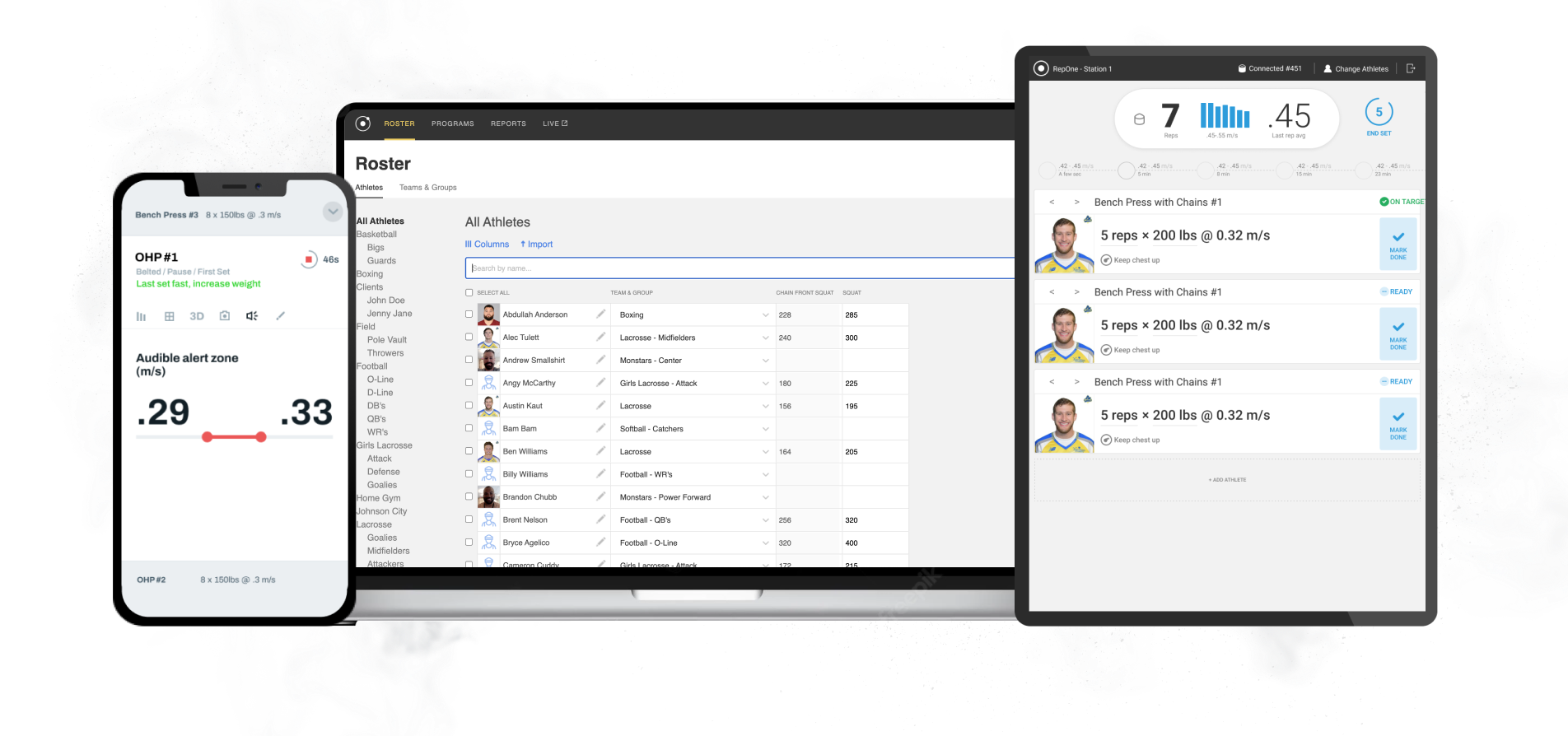
Our system is compatible with three core user types. The individual user or athlete, who we call the 'self-trainer'. They may use only our mobile app RepOne Athlete to log their workout, or can choose to use their account to access RepOne Coach for free. There, they can copy program templates, modify them as needed, create their own programs, and even add their friends and train as a group for free under 10 people. We think having the option to access all of the knobs and dials for you or your friend's training is a game changer.
Remote trainers have a similar experience, with affordable pricing above their first 10 clients. The Live Tab on RepOne Coach lets you see all of your athlete training data in real-time, anywhere on the planet. More remote coaching features are in the works as well, like video upload and chat.
Strength and Conditioning Coaches who have tablets mounted on racks in their weight room can use RepOne Station to guide many athletes simultaneously. If they don't have tablets, or want to add remote training capabilities, they can use the mobile app as well and get the full RepOne experience.
At launch, Kratos Flywheel is compatible with the RepOne Personal mobile app, and compatibility with the rest of the platform is coming very soon.
We think the RepOne platform is a big step up in functionality and user experience for connected performance fitness equipment. It's a giant leap beyond monochrome LCD displays and trainingapp.exe on Windows 97, and opens the door to customers beyond the prosumer, to those who may just want to get healthy.
If you train one athlete, and that athlete happens to be yourself, you're still a trainer. We see that at the prosumer end of the market as a company who makes VBT products, but we also see it in our every day lives. The majority of gym members walk in to workout without a plan, and a large minority have a templated plan (read: something they found online) and are self guided. These people deserve to have great workouts as well, but need more help to do so.
Our experience with athletes gives us great footing to launch a powerful platform while focusing on core features. Connected equipment that focuses on the performance athlete needs to be reliable and to collect accurate data above all else. The RepOne Connected platform excels at this and we're excited to reveal the next batch of compatible exercise equipment. We also know, along with our friends at Kratos, that athletes aren't the only people buying connected equipment. As we further develop our modular firmware and electronics, API's, and SDK's, we'll be able to support experiences that can entertain, gamify, and are content driven.
If we're right about the problems preventing the gym from being as connected as your new car, we think there's a future where all equipment is 'smart', your data is actually useful, and exercise becomes a lot more simple. The bleeding edge of performance fitness could finally reach people who are excluded due to price or skill. We don't think we have all the answers, in fact we're positive that ten years from now there will be plenty of people who don't improve their healthspan with exercise. We do think that we have a fair shot at helping a lot more people find the benefits of high quality exercise, and that's what we're most excited about.
Re-thinking connected fitness
Discover the inspiring journey of Anthony Blubello, a contracted civilian physical therapist with the USA Military. Learn about his motivation to...